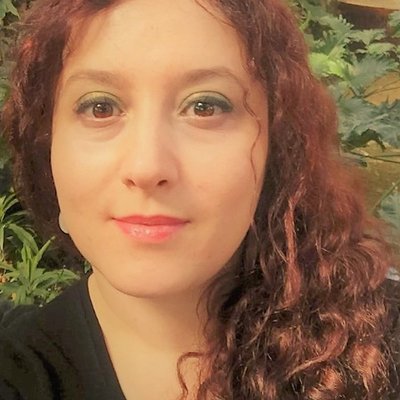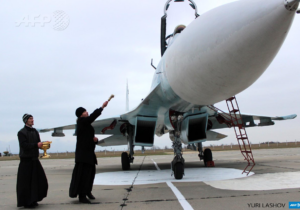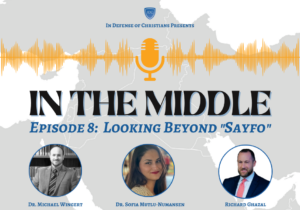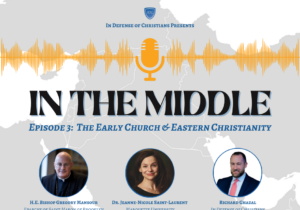In February, multiple earthquakes hit 10 cities in southern and central regions of Turkey, destroying thousands of homes, killing or otherwise inflicting serious injuries on thousands in addition forcing countless into homelessness.
The Turkish government announced on March 11 that the death toll caused by the earthquakes had reached 47,975. Yet, non-official figures estimate a much higher death toll. Geologist Prof. Dr. Övgün Ahmet Ercan, for instance, predicted on February 7 that the number of people under the rubble was approximately 184,000.
Some of the places worst affected by the earthquakes are in Hatay province and its Antioch (Antakya) district. Many locals of the province said that rescuers or aid were not sent to the city by the government for several days following the first earthquake of February 6.
Tragically, Antioch has been almost completely destroyed, with most of its residents now homeless, living in tents, desperately in need of help. Sadly, widespread corruption in the construction sector has largely increased the death toll resulting from the earthquakes. So many human lives, homes and historical buildings have been destroyed primarily by the earthquakes, but additionally due to corrupt building contractors, engineers, building inspectors, municipalities, and state institutions in Turkey.
Meanwhile, the historic yet dwindling Christian community of Antioch is urgently awaiting help and support in the hope of keeping their existence in the town alive.
Antioch: An ancient city established by Greeks
Antioch, a historically Greek city, has a magnificent Christian, Jewish and Alevi history and cultural heritage.
Seleucus I Nicator, one of the generals of Alexander the Great, founded the city in 300 BCE and named it after his father, Antiochus. Antioch soon became the capital of the Seleucid kingdom and then the capital of the Roman province of Syria. During the Roman period, Antioch was the third largest city in the Roman world after Rome and Alexandria.
It is not only Antioch. Most cities and towns in Anatolia (also known as Asia Minor) in modern-day Turkey were built by Greeks. Even the name Anatolia comes from the Greek “anatole,” meaning “the east, sunrise, place from where the sun rises.” After 133 BCE, the Roman Empire took over the cities of Anatolia, eventually turning it into a wholly Roman province. Most natives in Anatolia spoke Greek at the time.
After the disintegration of the Western Roman Empire in the 5th Century, the Greek-speaking Eastern Roman (Byzantine) Empire continued its sovereignty over the region. After the rise of Islam, the Byzantine Christians fought Islamic invaders and caliphates for centuries. Turks, originally from Central Asia, started invading and capturing the towns in Anatolia in the eleventh century. In 1299, the Ottoman Empire was established in Anatolia on lands Greeks had built and ruled. The Ottomans constituted the Islamic caliphate from 1517 to 1924.
Another Greek city that made its mark in the ancient world was Constantinople (“the city of Constantine”), re-founded by the emperor Constantine of the Roman Empire in 330. It became the site of Constantine’s “New Rome,” a Christian city of enormous wealth and marvelous architecture. Constantinople stood as the seat of the Eastern Roman Empire for the next 1,100 years until it was invaded by Sultan Mehmed II of the Ottoman Empire in 1453. The city is now officially called Istanbul, a Greek word which means “to the city.” The Christian natives of Anatolia were Islamized as a result of a centuries-long process at the hands of Muslims that included systematic discrimination and persecution.
Biblical Antioch: People of Antioch were first “Christians”
Anatolia is of immense importance for Christianity. It was in Antioch that the followers of Jesus were called “Christians” for the first time in history. In the second part of Acts 11, 26 we read: “… the disciples were called Christians first in Antioch.”
Antioch is where one out of the five centers (Patriarchates) of the ancient Pentarchy is located. Another is Constantinople. St. Peter, St. Paul, and Barnabas all preached in Antioch. St. Peter began his ministry in Antioch and established a church there as a place for the early Christian community of the city to meet. It came to be known as The Cave Church of St. Peter in Antioch.
Not only Antioch, but also many other sites in Anatolia are significant for the origins of Christianity. That is why, Anatolia is often referred to as “the second Holy Land” after Israel. Anatolia is the birthplace of many apostles and saints, such as Paul of Tarsus, Timothy, Nicholas of Myra, and Polycarp of Smyrna.
St Paul traveled extensively in Anatolia, including in Antioch, preaching Jesus’s teachings. Of the 27 books in the New Testament, 13 are traditionally attributed to St. Paul. Six of those were written to churches or saints located in Anatolia. These are the Epistle to the Galatians, Epistle to the Colossians, Epistle to St Philemon, Epistle to the Ephesians and the First and Second Epistles to St Timothy.
Anatolia is also home to the Seven Churches of Asia, where the Revelations of John were sent. All of the first seven Ecumenical Councils were held in Anatolia. Of these, the Nicene Creed was declared during the First Council of Nicaea (present-day Iznik) in 325.
For a thousand years, Hagia Sophia, built by Greek Christians, was the world’s largest church. It was converted into a mosque first by the Ottoman occupiers in 1453, then a museum in 1935 by the Kemalist Turkish government, and then changed back again to a mosque by Turkish President Recep Tayyip Erdoğan in 2020.
Islam targets Antioch
Throughout the centuries, Antioch was attacked and invaded by several foreign peoples including Arabs, Mamluks and Turks, which largely affected the religious and ethnic composition of the city. The Greek Orthodox Patriarchate in Antioch, for instance, moved to Damascus in Syria in the fourteenth century while maintaining its title as “Patriarchate of Antioch and All the East.”
The Ottomans took control of Antioch in 1516. Christians and Jews became dhimmis under the Muslim Ottoman rule. Dhimmis are non-Muslims who acknowledge their subservience to Muslim rule and lack of political power in Islamic society. The lives of dhimmis are thus usually spared only for as long as they pay special taxes (called jizya) to Muslim authorities and accept the inferior status and social restrictions imposed on them. The Ottoman Empire occupied most of the Middle East, North Africa and the Balkans between 1516 and 1914, turning native Christians and Jews there into dhimmis, second-class subjects of their empire.
Scholar Ioannis Ν. Grigoriadis writes:
“From a minority in the early imperial Roman era to a dominant majority in the late Roman years and again a minority in the Ottoman years, the Christians of Antioch were characterized by linguistic diversity. In the Hellenistic, Roman and Byzantine years, Syriac, Aramaic, Greek and Hebrew were among the main spoken languages in the region. The Umayyad [Arab] conquest of the Levant in the seventh century added Arabic culture and language to the Antiochene mosaic. Over the centuries, Arabic eventually rose to a dominant position in the province, while Greek, Syriac and Aramaic survived only as liturgical languages. Despite the dominance of Arabic, the Greek Orthodox of the Levant continued defining themselves not on the basis of language but of religion, as a part of the Rum [Roman\Greek] ta’ife [community] or millet [nation].”
The Christian population collapse, however, resulted from the Hamidian massacres in the mid-1890s, 1913-23 Christian genocide committed by Ottoman Turkey and the 1923 forced population exchange between Turkey and Greece. The website “Virtual Genocide Memorial” reports that “Armenians, who maintained a cultural and economic presence in Iskenderun for centuries, most notably due to trade, were wiped out in the Hamidian Massacres, Adana Massacres, and the Armenian genocide, after centuries of discrimination.”
Musa Dagh (“Moses Mountain”), where a heroic Armenian resistance to the genocide took place in 1915, is also located in Hatay. During the Ottoman era, these towns were still referred to as Antioch and Alexandretta. The city was named “Hatay” in 1936 – after the establishment of the Republic of Turkey in 1923. Today the city is still called Hatay. Antioch’s official name is Antakya and Alexandretta is called Iskenderun. Today, both Antakya and Iskenderun are towns in the wider province of Hatay, and Antioch is officially its central district.
Antioch’s Annexation by Turkey
The annexation of the city by Turkey goes back to the period of the Sanjak of Alexandretta (1920-1936), a sanjak (district) of the French Mandate of Syria. After the First World War, the Sanjak of Alexandretta (present-day Hatay) became part of the French Mandate of Syria under a special statute. On September 9, 1936, the Franco-Syrian Treaty of Alliance was signed, guaranteeing the independence and sovereignty of Syria within three years.
Professor Avedis K. Sanjian writes:
“The sanjak was, until then, had been governed by an autonomous regime within the French mandated State of Syria, and guaranteed by both France and Turkey through the ‘Franklin-Bouillon Agreement’ signed at Ankara on October 20, 1921.”
The 1923 Treaty of Lausanne, which defined the frontiers of Turkey, also confirmed the Turco-Syrian frontier delineated in the Franklin-Bouillon Agreement. Sanjian adds:
“Moreover, in Articles 16 and 27, the Treaty divested Turkey of all sovereign and political rights and claims to territories detached from her. This renunciation was juridically in favor, not of France, but of Syria, since France was acting in the Levant territories in the name of the League of Nations and on behalf of Syria.
“Throughout the mandatory period the French authorities, besides scrupulously preserving the Sanjak’s autonomy within the Syrian political framework, had made it amply clear that the district was an integral part of Syria; that it was neither a state nor a government, but a Syrian province enjoying certain privileges.”
The separation of the Sanjak of Alexandretta from Syria and its transfer to Turkey took place gradually. In the late 1930s, Turkey drastically changed its policy towards Antioch by violating the treaties signed regarding the legal status of the city. In July of 1939, Turkey’s parliament approved a law establishing the Hatay Province. Then, a questionable referendum was held. To influence the results, the Turkish government transferred its supporters into the city and deported many non-Turkish residents.
Scholar Jack Kalpakian writes that the “Turkish army … expelled most of the province’s Alawite Arabs and Armenian majority. A rigged referendum followed.” The controversial referendum led to the annexation of Hatay to Turkey.
Historian Robert B. Satloff explains why France ceded Alexandretta to Turkey, much to the resentment of its locals:
“In the late 1930s, Kemalist Turkey exploited anxiety over the growth of fascism in Europe to coerce France into ceding the Sanjak (district) of Alexandretta… Various historians have dutifully chronicled the story of Ankara’s irredentism and Paris’ appeasement, detailing the sundry diplomatic ploys, subterfuges and deceptions each employed in an attempt to legitimize an illegitimate act. Virtually all commentators have vilified (correctly, I may add) the cession of the Sanjak as an unconscionable and illegal deal struck between two governments who showed little concern for the integrity of international law or the wishes of the local residents.”
The sanjak under the French mandate was a multicultural area consisting of Turks, Arabs, Armenians, Greeks, Jews, and others. In the sanjak, Satloff notes, there were “more than 200,000 people, representing at least 21 linguistic and religious communities.”
The Turkish annexation has resulted in yet another demographic alteration. Many Arabs, Armenians and Greeks had to move to Syria. Following the annexation, almost the entire Armenian population of Antioch, the survivors of the 1915 genocide by Ottoman Turkey, settled in Aleppo in Syria. Scholar Ioannis Ν. Grigoriadis writes:
“While the 1939 annexation of the Sanjak of Alexandretta by Turkey led thousands of Orthodox to the decision to emigrate to Syria or overseas, a substantial part of the population decided to remain and become citizens of Turkey, mainly in the cities of Antakya and Iskenderun, the towns of Arsuz, Altınözü (Qusayr) and Samandağ (Süveydiye), and their adjacent villages. Those who remained maintained their Greek Orthodox (Rum) identity.”
The situation of Antioch Christians following the earthquake
In 2022 the population of Hatay was approximately 1.6 million. Hatay has a robust Arab Alevi population. In fact, the largest Arab Alevi community of Turkey lives there. And it still has a small, diverse Christian community. They include Greek Orthodox, Assyrians, Armenians, Catholics, and Protestants. Simon Okur, a Greek Orthodox with family roots in the city, told this author that prior to the earthquake approximately 10,000 Christians lived in the province.
Okur was born in Germany, but his parents and his wife’s family were born in the area of Antioch. Okur’s family is currently part of the council of the Antiochian-Orthodox Parish of St. John the Baptist in Stuttgart, Germany. He said:
“Half of my family is from Antioch, and the other half is from Arsuz (ancient Rhossos, a town in Hatay). It was formerly a Christian village but most Christians left and live in Iskenderun (Alexandretta). Only during the summer would they return to Arsuz.
“My parents left Antioch in 1990 because of the political and economic situation in Turkey.
“After the earthquake, my father decided to fly to the city of Mersin. It’s about 250 kilometers from Antioch. The Greek Orthodox church of Mersin opened their doors to the victims of the earthquake. Almost 1,000 people from Antioch are there. They helped them get out of the earthquake region and brought food, tents and other supplies to the surrounding villages.
“Because of the earthquake, our whole family in Antioch fled to Mersin. That’s why my father didn’t go to Antioch. He helped them financially and got information about how best we can help through our parish in Germany. He stayed one week there but is now back in Germany.”
Okur lovingly recalls the peaceful coexistence of the locals in Hatay.
“All religions and ethnicities – whether Christian, Muslim, Jew, or Alevi – Arabs, Armenians, Turks and others lived together in peace. People didn’t have problems with each other because of religious or ethnic differences. And of course, our food is famous. It has been awarded by UNESCO as a City of Gastronomy.”
Yet, the earthquake, made worse by the corruption in the construction sector, has ruined the town.
“The town of Antioch is almost completely destroyed. Especially the center of Antioch has been tremendously damaged. We lost seven people in our family. In the whole area, about 70 people of the Greek Orthodox community died. It’s a very high loss because there are only a few thousand of us left there. In the villages the situation is a bit better because they don’t live in tall apartments, but most of the houses there are also damaged. Sadly, help arrived in our region two days after the earthquake. Many people died during this time as they waited helplessly injured under the rubble and made worse because of the cold weather.
“Prior to the earthquake, there were 7 Greek Orthodox communities in and around Antioch.
“One is in Mersin, and it’s the only one not directly neighboring Antioch. The other ones are in Antioch and Iskenderun (Alexandretta) or in the surrounding villages Arsuz (Rhossos), Samandag (Seleucia Pieria), Tokacli and Sarilar. There is also the only remaining Armenian village named Vakifli, and some small Catholic communities.
“Sadly, all these churches are terribly damaged by the earthquake. There is not even one church left in the area which could be used to pray in.
“Most of the Christians left after the earthquake, but they all want to go back and rebuild their churches and houses because they love this city. It’s a holy city for all Christians.”
Christian communities in and from Antioch are in urgent need of financial support. Only if they get financial help can they return to Antioch to rebuild their homes and churches, Okur notes.
Okur adds that the best ways to donate are through the Antiochian Patriarchate, the dioceses or any Antiochian-Orthodox parish. Donations could be sent to the Antiochian Orthodox Christian Archdiocese of North America, the Diocese of Germany and of Middle Europe and the Parish of St. John the Baptist in Stuttgart, Germany.
It’s a good time for Christians worldwide to help Antioch, where believers in Christ were for the first time in history called Christians.






